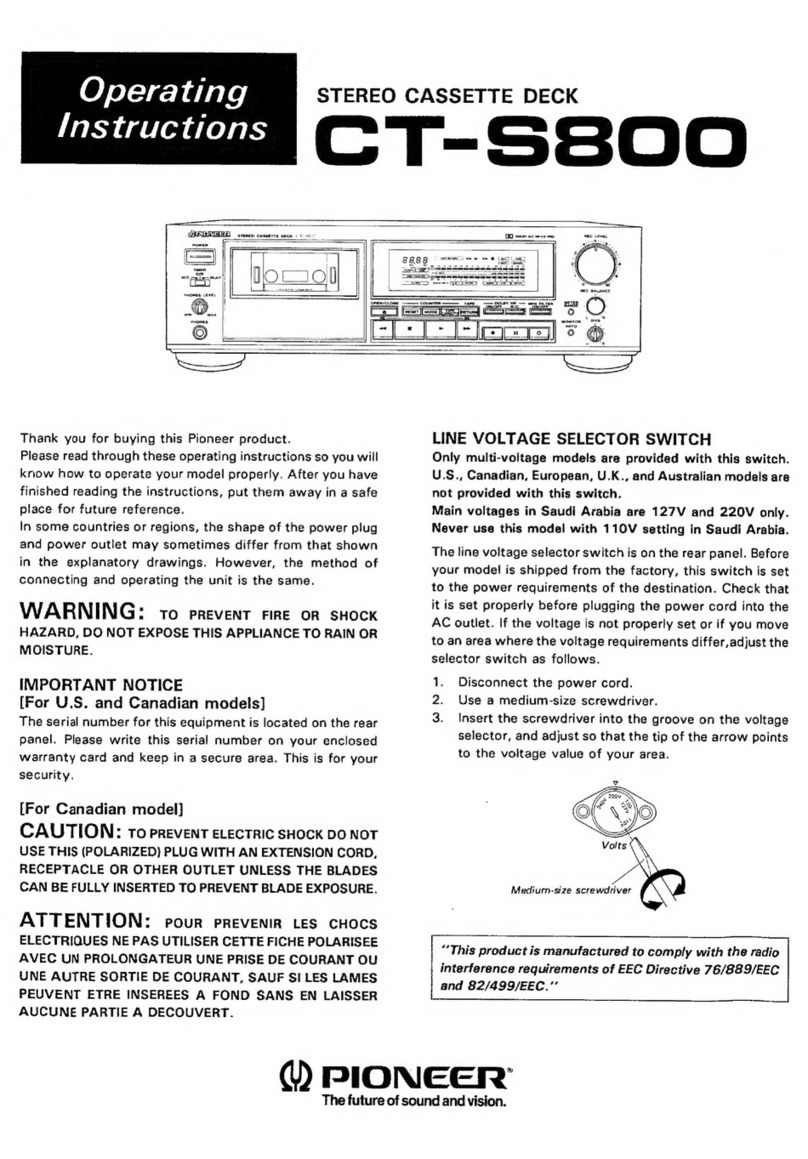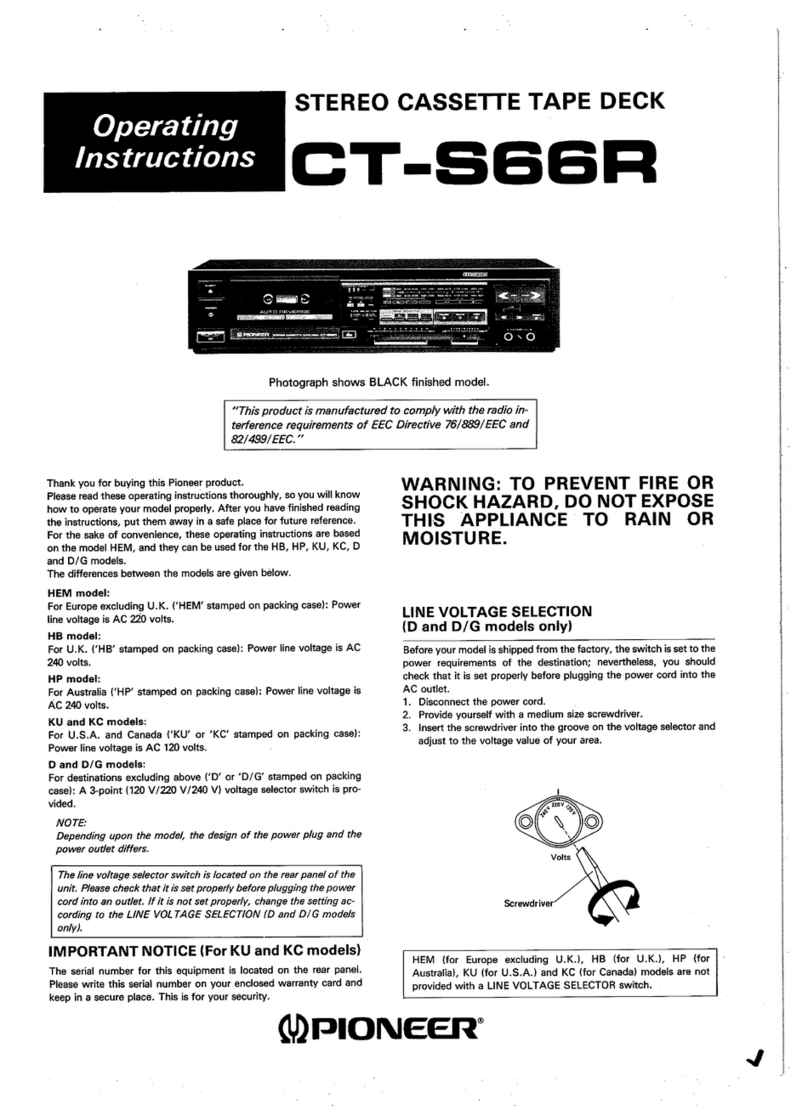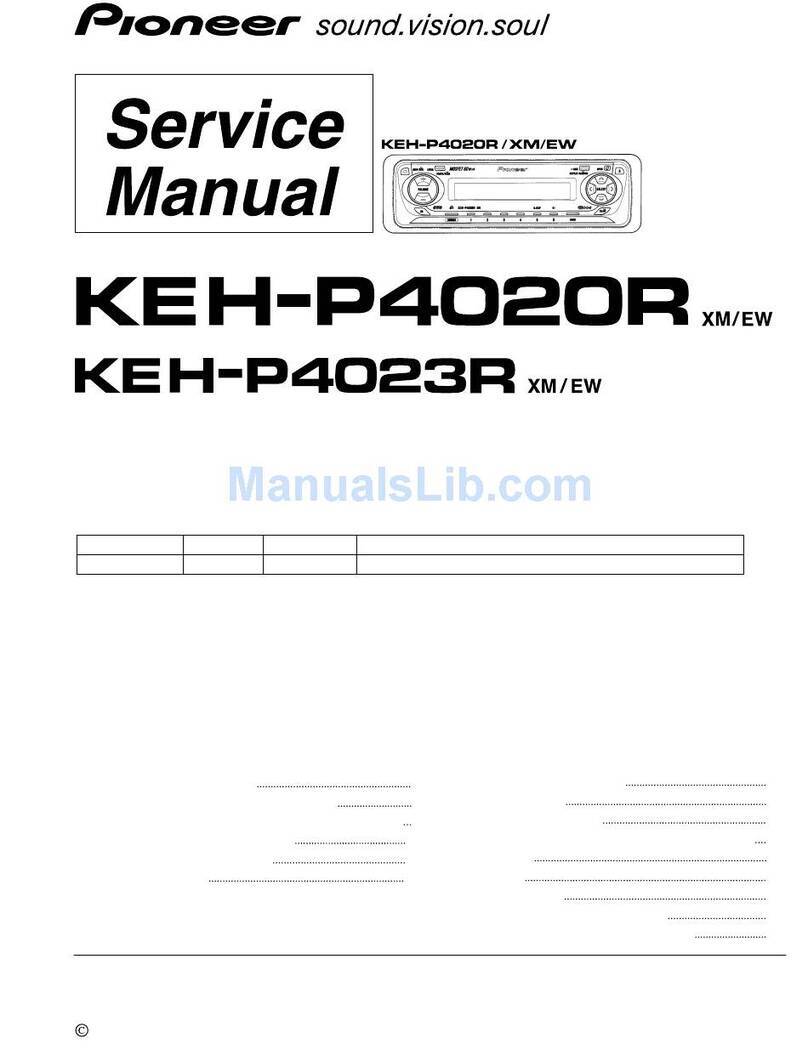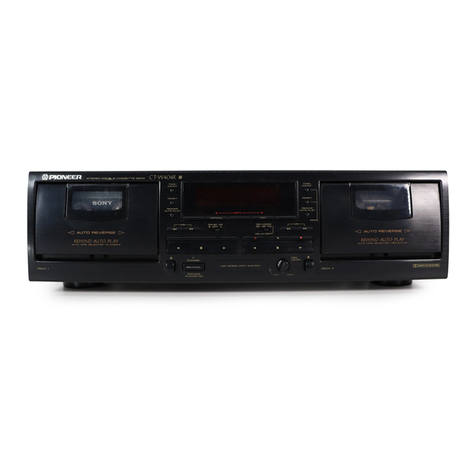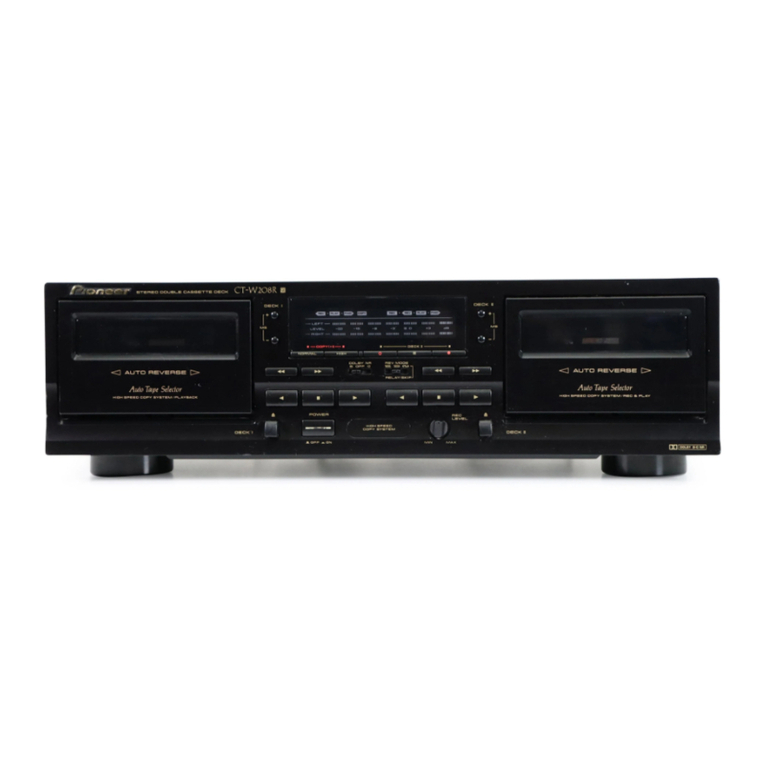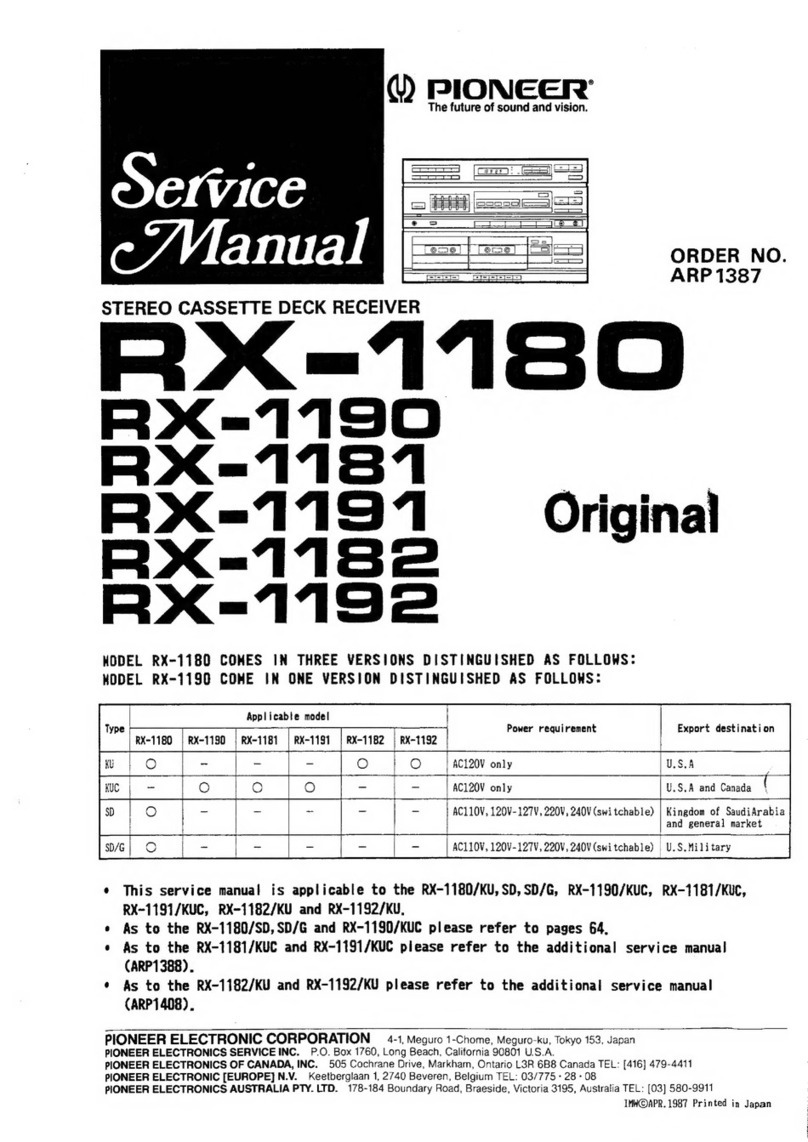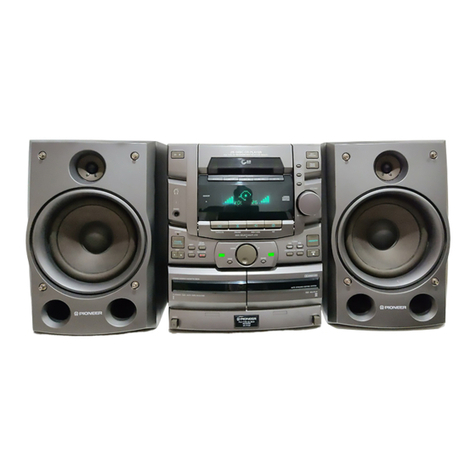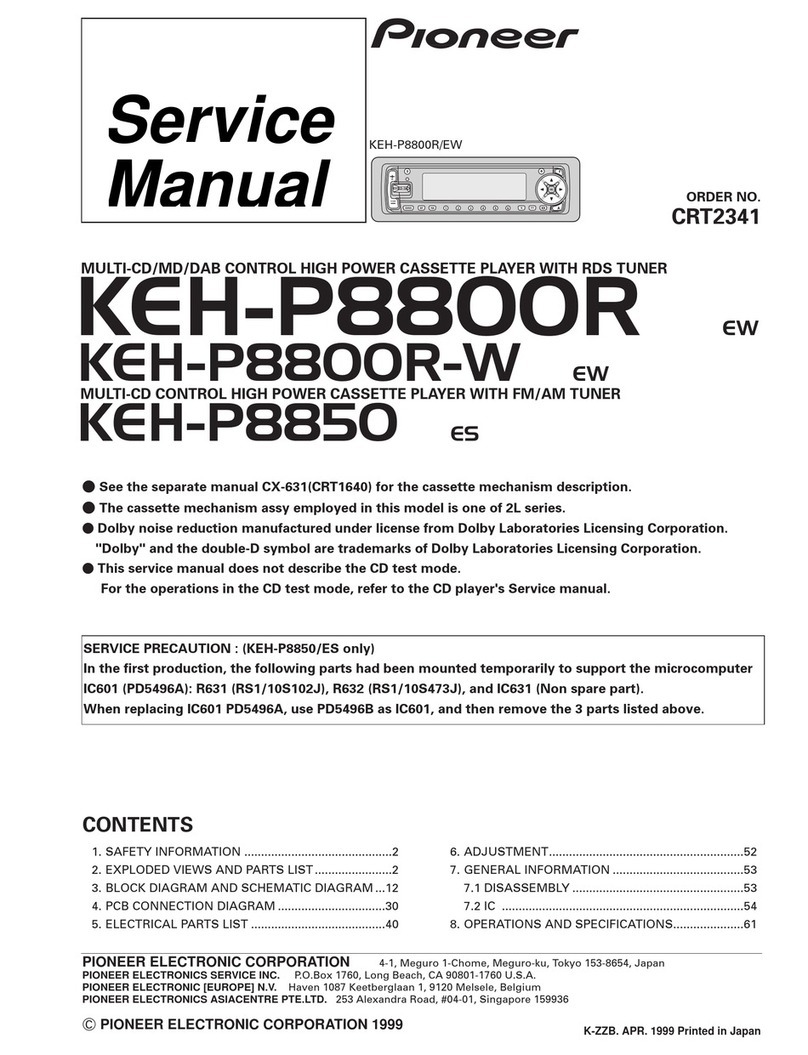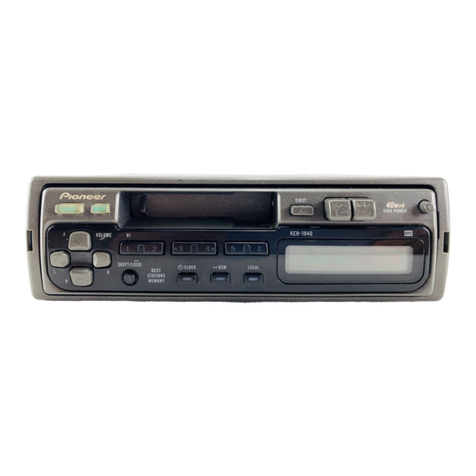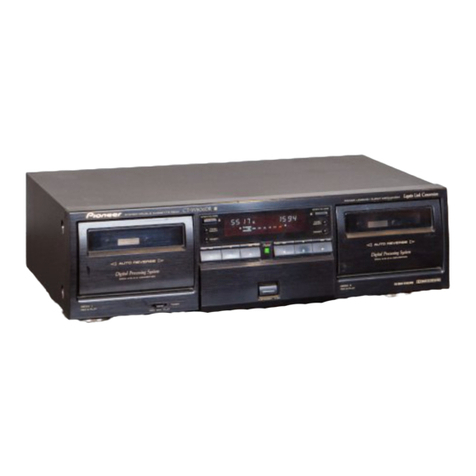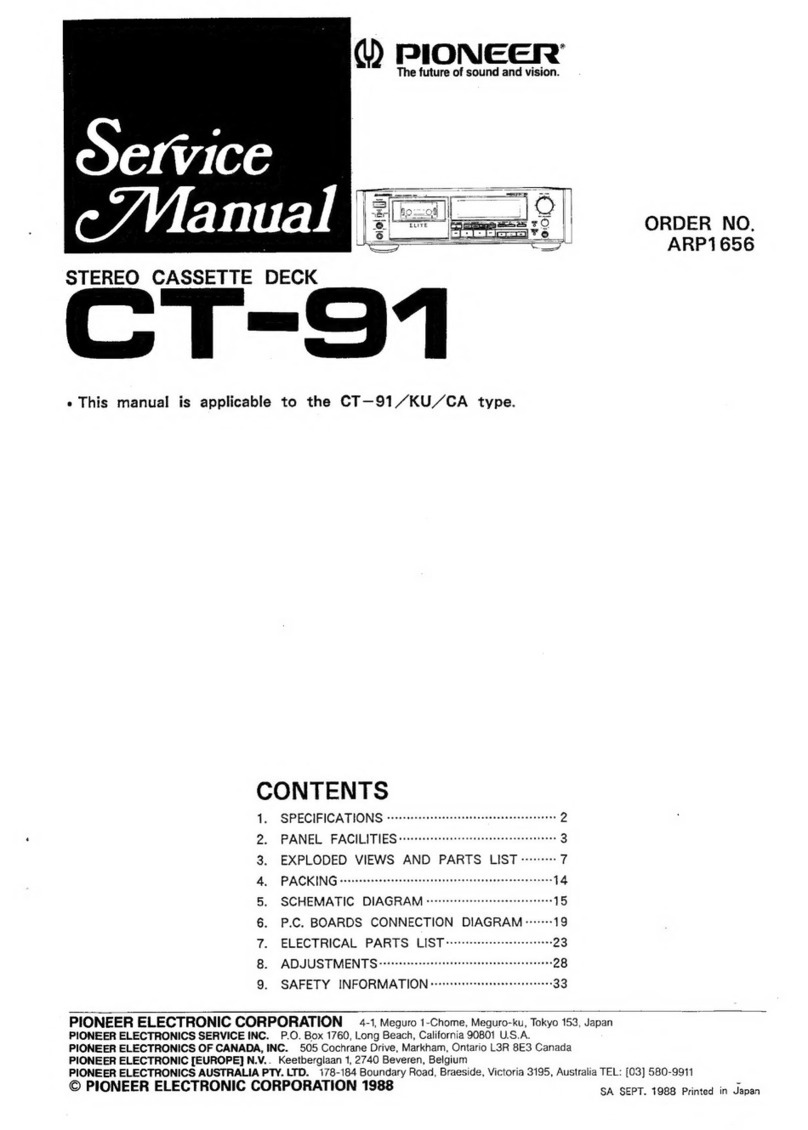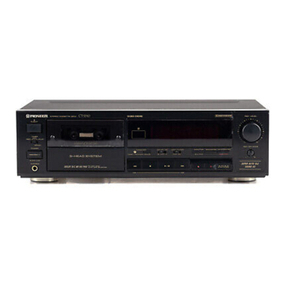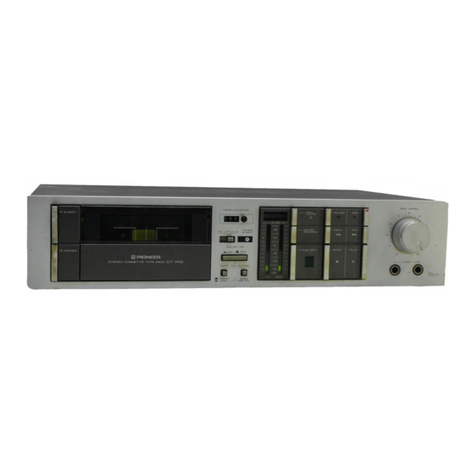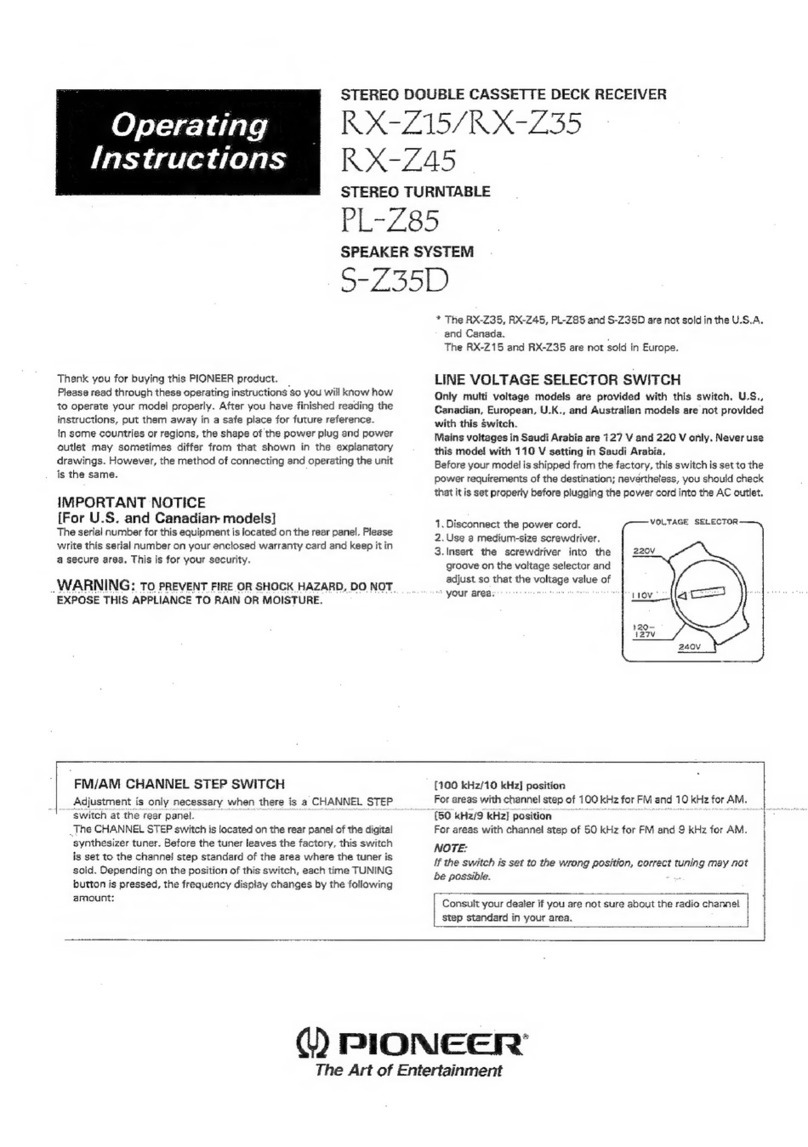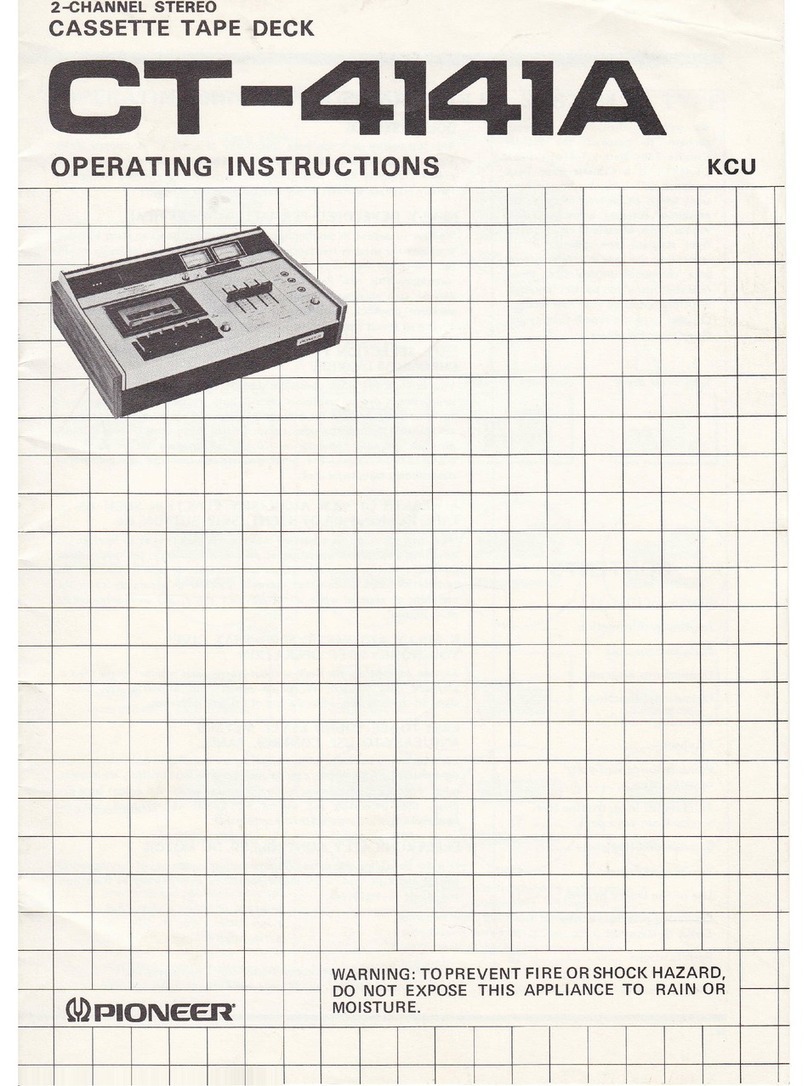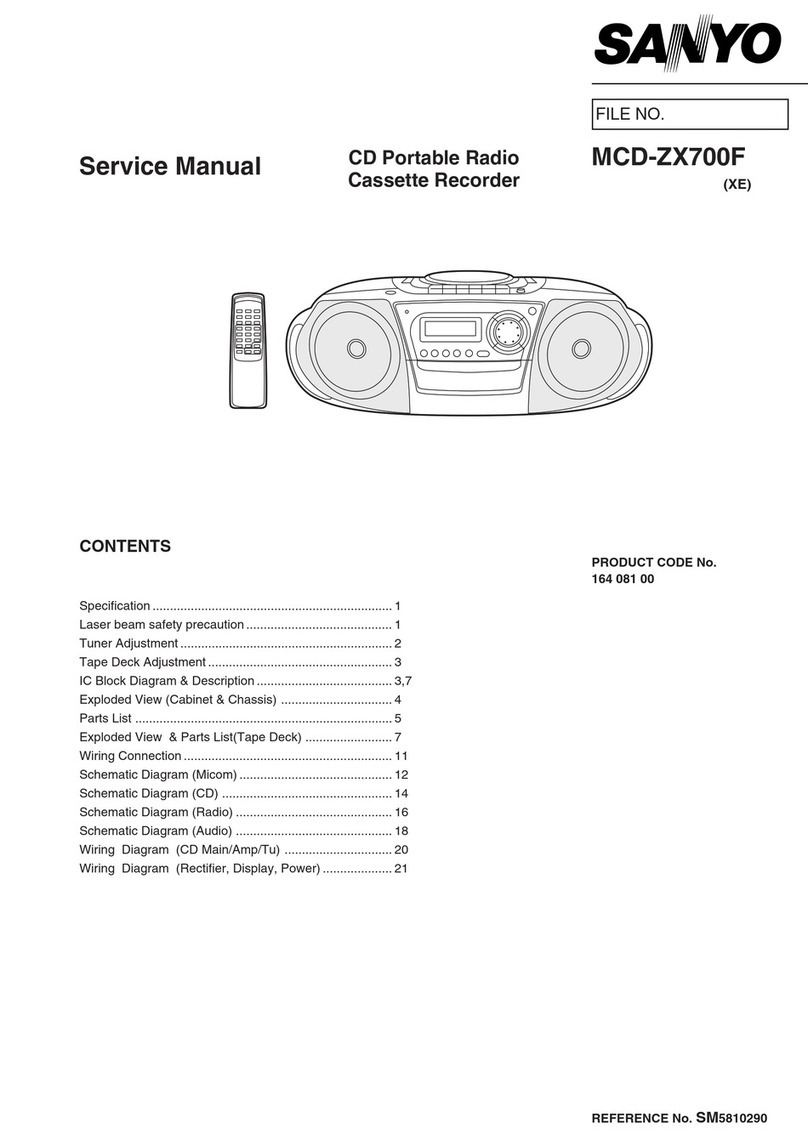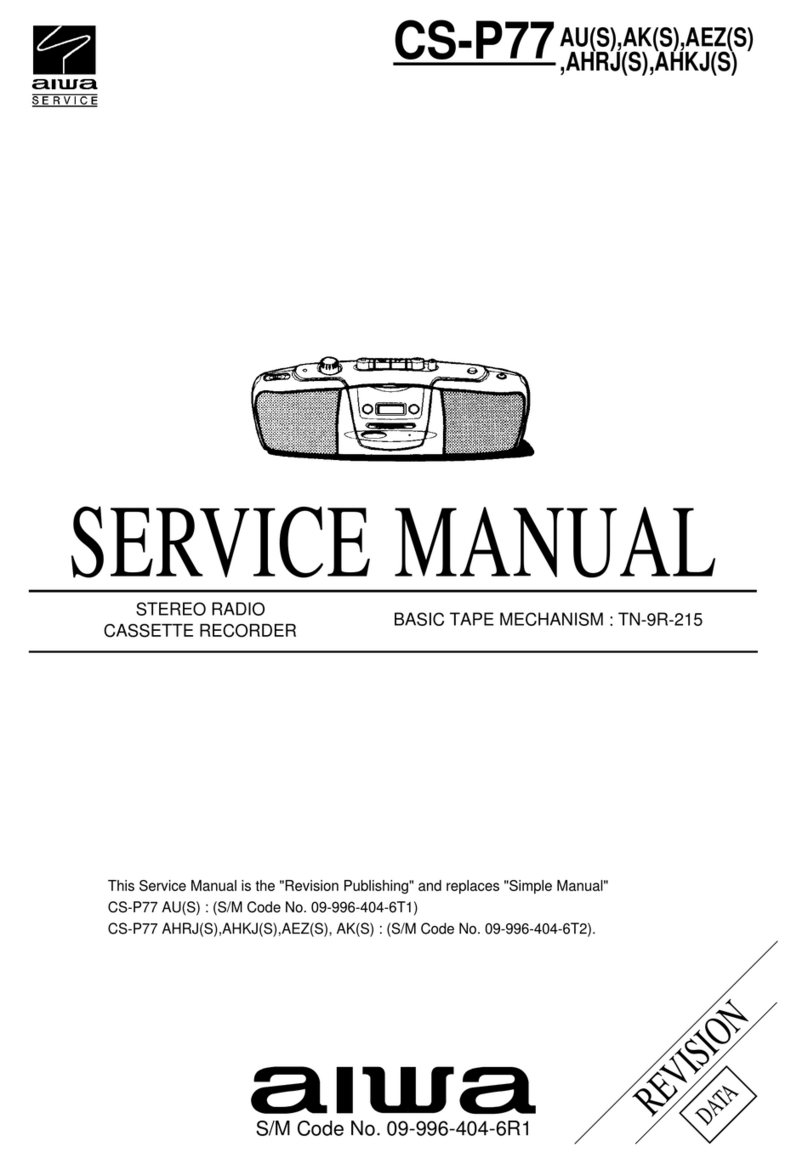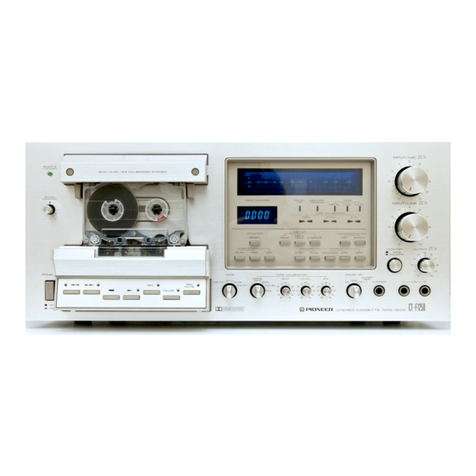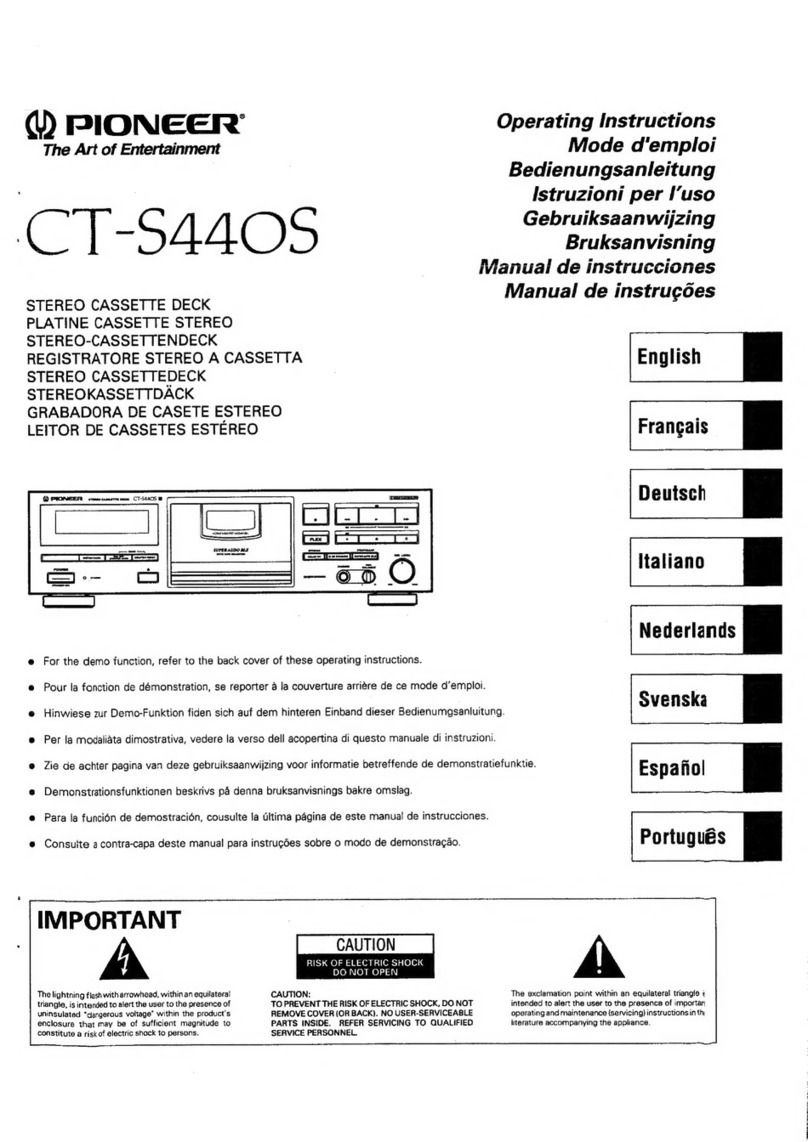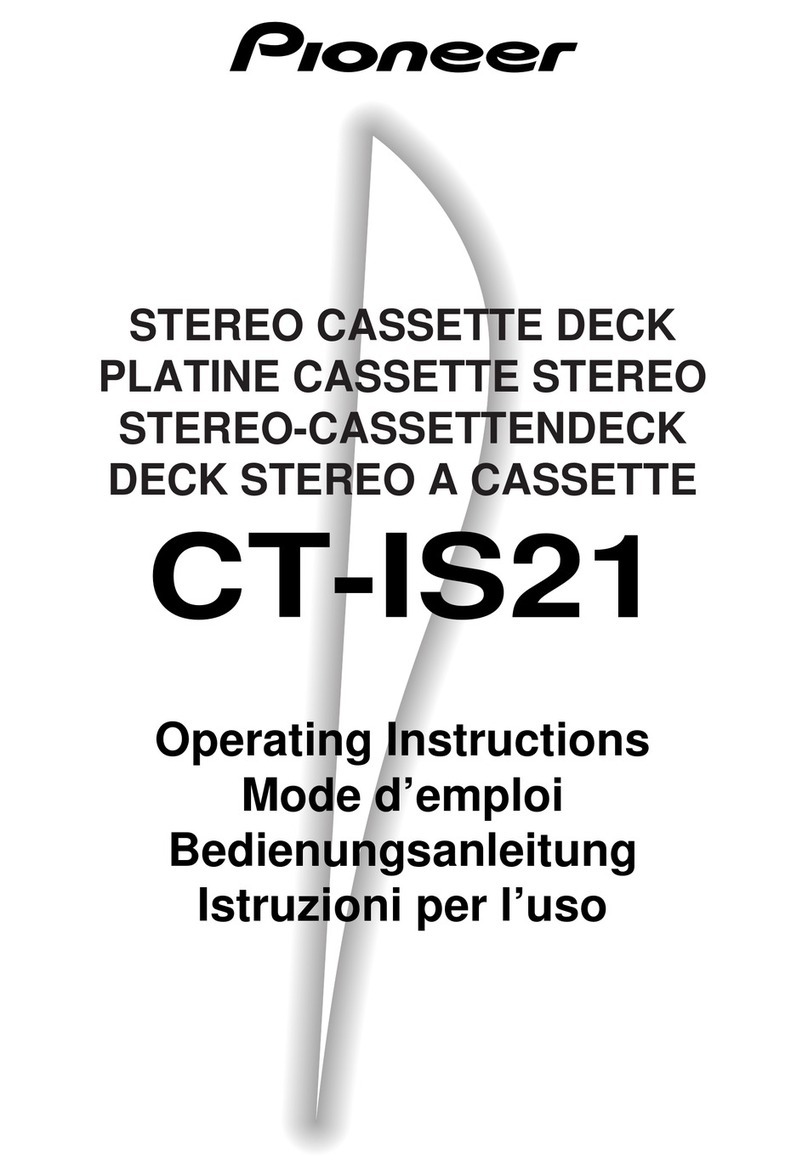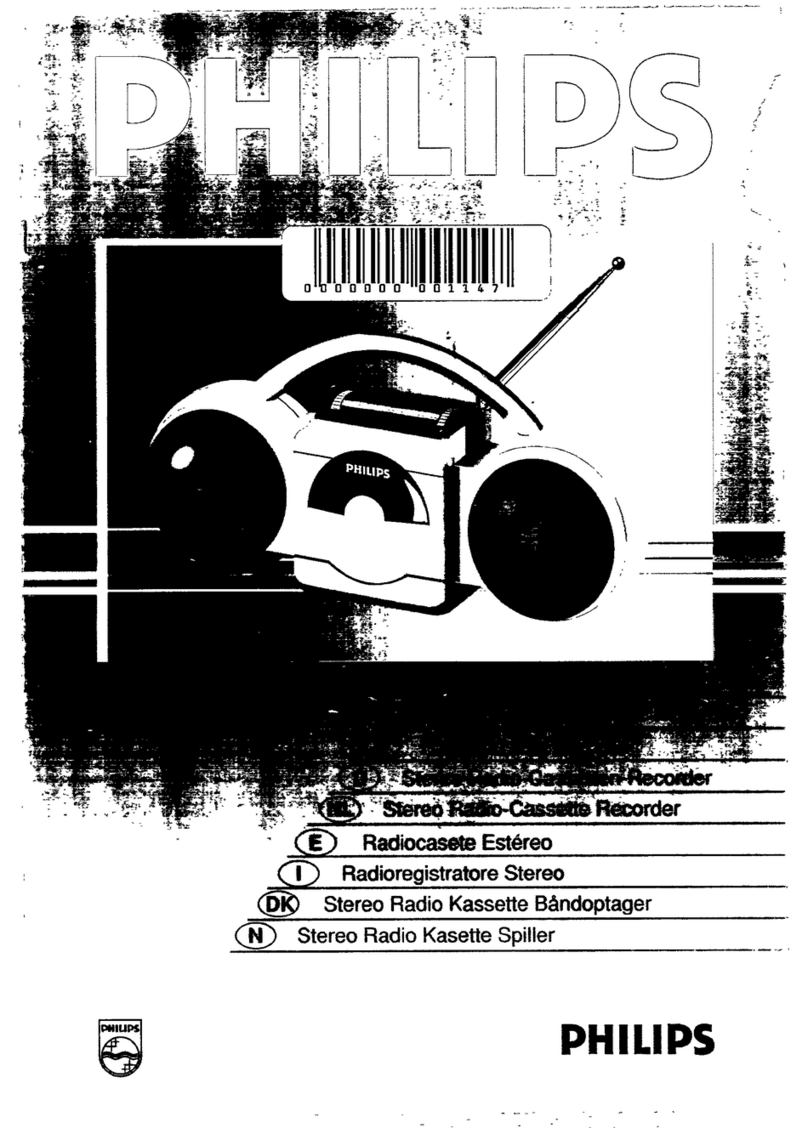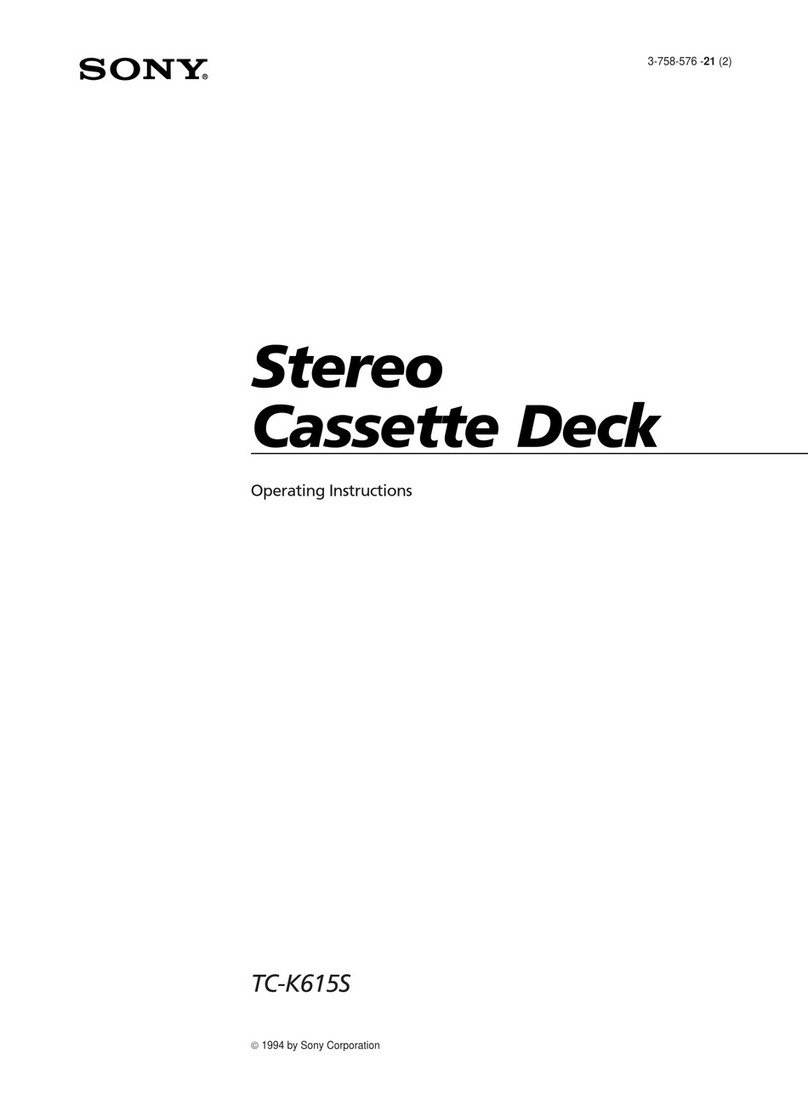
FRONT
PANEL
FACILITIES
TWO
MODES
COUNTER
Counter
Made
button
(TIME/COUNT)
Press
the
button,
and
2
modes
change
alternately.
Tape
counter
=>
Time
counter
i
Tape
counter
Different
counters
are
provided
for
DECK
|
and
il.
The
number
on
the
counters
increase/decrease
as
a
tape
runs.
It
is
useful
if
you
make
a
note
of
the
location
and
length
of
a
selection
while
re-
cording
or
playing
back.
You
can
then
easily
locate
a
desired
se-
lection
or
where
to
resume
recording.
@
Time
counter
@
This
indicates
the
elapsed
time
for
recording
or
playback.
This
automatically
starts
counting
when
recording
or
playback
starts.
During
fast-forwarding/rewinding,
the
counter
automatically
switches
to
a
tape
counter.
@
The
time
counter
indicates
only
the
time
duration
of
recording
or
playback.
When
recording
or
playback
is
changed
to
fastforward-
ing,
rewinding,
or
music
search,
the
counter
switches
from
the
time
counter
to
the
tape
counter.
When
the
operation
returns
to
recording
or
playback,
the
counter
switches
to
the
time
counter.
®
Tape
counter
indication
Coa
©
Time
counter
indication
Counter
reset
button
(RESET)
Press
this
button
to
reset
the
tape
counter
to
§
2 2
2,
of
to
reset
the
time
counter
to
2
2:9
@.
Counter
indicator
during
music
search
nn
uti
Oo
4
PHO!
Plus
sign
P-al
Minus
sign
Nomral
tape
counter
indicator
Counter
indicator
during
music
search
@
Aplus
sign
i+)
appears
during
music
search
in
the
forward
di-
rection.
@
Aminus
sign
(~)
appears
during
music
search
in
the
reverse
direction
The
last
two
digits
of
the
counter
indicator
show
the
number
of
selections
to
be
skipped.
if
three
selections
are
to
be
skipped,
for
example,
it
shows
”P+03"
initially.
The
number
then
decreases
by
7
each
time
a
selection
is
skipped
("P+02”
=
“P+01
etc.).
When
the
deck
resumes
playback,
the
normal
tape
counter
reap-
pears.
mm.
9
I}
ou.
uu
|
PLAYBACK
[_
SINGLE
PLAYBACK
(Either
DECK
I
or
DECK
ti)
|
|_
BLANK
SKIP
1.
Load
a
prerecorded
tape
in
DECK
|!
or
Il.
2.
Set
the
DOLBY
NR
switch.
@
Always
set
the
switch
to
the
same
Position
that
was
used
for
recording,
3.
Set the
REV
MODE
switch
(see
Page
8).
4.
Set
the
stereo
amplifier
for
tape
piayback.
5.
Press
the
playback
(>
or
<)
button
of
either
DECK
|
or
i.
To
improve
high
frequency
sound
during
playback
in
tapes
with
poor
recordings
Press
the
FLEX
button
and
playback
the
tape.
Ta
stop
playback
temporarily
(DECK
If
only)
Press
the
pause
(I)
button,
©
To
resume
playback,
either
press
the
pause
(i)
button
again,
or
Press
the
playback
(
or
~)
button.
To
stop
playback
Press
the
stop
(il)
button,
10
<RRB1176>
En:
This
function
allows
you
to
skip
unrecorded
portions
of
the
tape
during
playback,
Set
the
REV
MODE
switch
to
c=
NOTE:
@
When
the
REV
MODE
switch
is
set
to
the
>
position,
the
relay
made
will
be
selected,
@
When
this
mode
is
selected,
if
the
tape
deck
encounters
an
unre»
corded
portion
of
tape
more
than
15
seconds
in
length,
it
will
fast
forward
the
tape
until
it
encounters
another
recorded
portion,
and
resume
playback
from
that
point.
[RELAY
PLAYBACK
When
relay
playback
mode
is
selected.
continuous
playback
can
be
performed.
When
the
tape
in
the
first
deck
reaches
its
end
and
stops,
the
other
deck
will
automatically
begin
playback.
1.
Load
prerecorded
tapes
in
DECK
|
and
DECK
Ii.
2.
Set
the
DOLBY
NR
switch.
@
Always
set
the
switch
to
the
same
positions
that
were
used
for
recording.
3.
Set
the
REV
MODE
switch
to
<>
(see
page
11).
4.
Set
the
stereo
amplifier
for
tape
playback.
5.
Press
the
playback
{>
or
<)
button
of
the
deck
that
will
start
to
play
first.
@
When
the
tape
in
one
dack
ends,
the
other
deck
automatically
begins
playback.
@
To
cancel
reiay
playback,
press
the
Stop
(i)
button.
